What is stretching?
Stretching is not just limited to gymnasts or dancers. Stretching exercises are essential to carry out even the most simple activities. A lack of stretching can shorten your muscles and make them tight. Regular stretching can keep your muscle long, flexible, and lean.
The most common type of stretching are – dynamic stretches or active movements done before working out and static stretches done in a comfortable pose for a long time after exercising.
Benefits of stretching
Here are some benefits of stretching exercises:
- Decreases the risk of injury
- Improves flexibility
- Increases muscle blood flow and reduces muscle soreness
- Improves your posture
- Reduces stress, body aches, and musculoskeletal pain
- Helps the joints move through the full range of motions
- Improves your ability to do daily activities
- Improves your performance in athletic activities
- Helps reduce post-exercise soreness and stiffness
Stretching exercises
Take a look at some basic stretching exercises which can exercise your body and keep you flexible:
Hamstring stretch
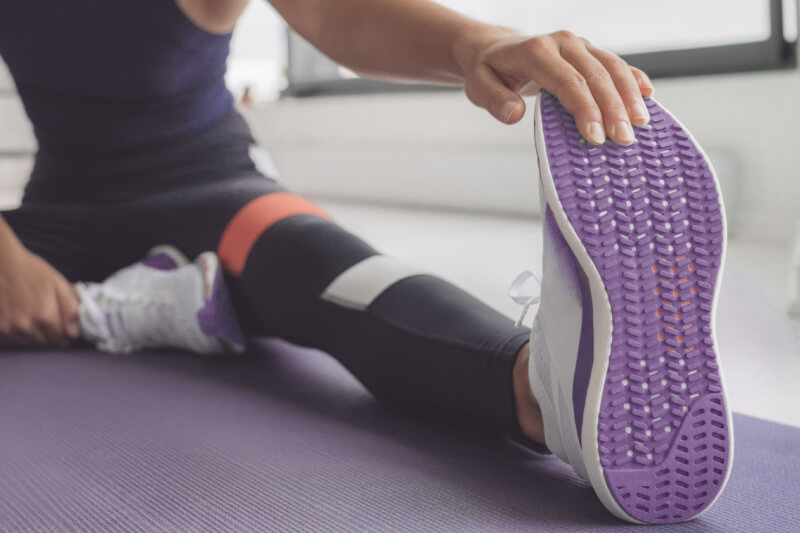
A hamstring stretch can keep the muscles in your thighs flexible. Sit on the floor with your legs outstretched in front of you. Try to touch your toe with your hands until you find a stretch on your lower back. If you cannot reach your toe, slide your hands to your knees and continue stretching as much as your muscles permit. Hold the stretch for 30 seconds, then slowly return to the sitting position.
A similar hamstring stretch can be done in a standing position. Stand with your feet together. Slowly bend so your hands touch your feet or the ground. If you are unable to reach the floor, try putting bricks or books and bend as much as you can to touch them. Slowly return to the starting position.
Quad Stretch
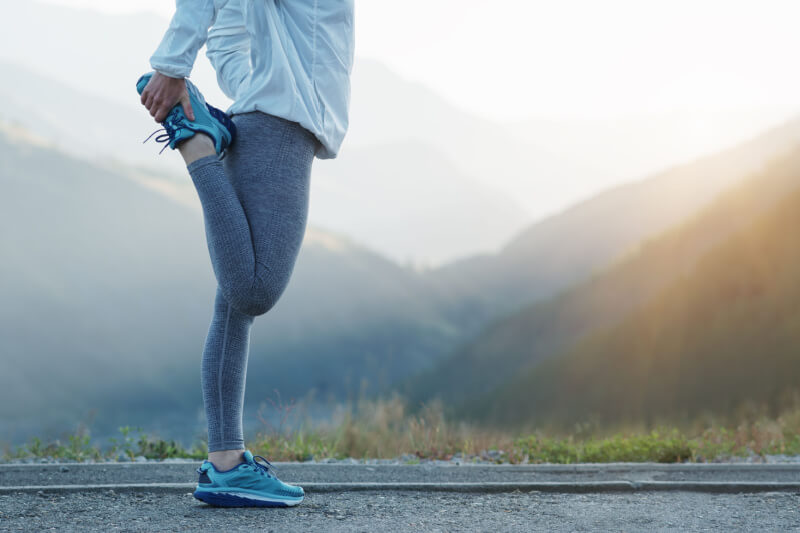
Stand and hold on to a chair or a wall for support. Grab the top of your foot and bring the foot to the glute with your knees pointing straight to the floor. You will experience a stretch in the thighs. Hold the stretch for 30 seconds and switch sides.
Shoulder stretch
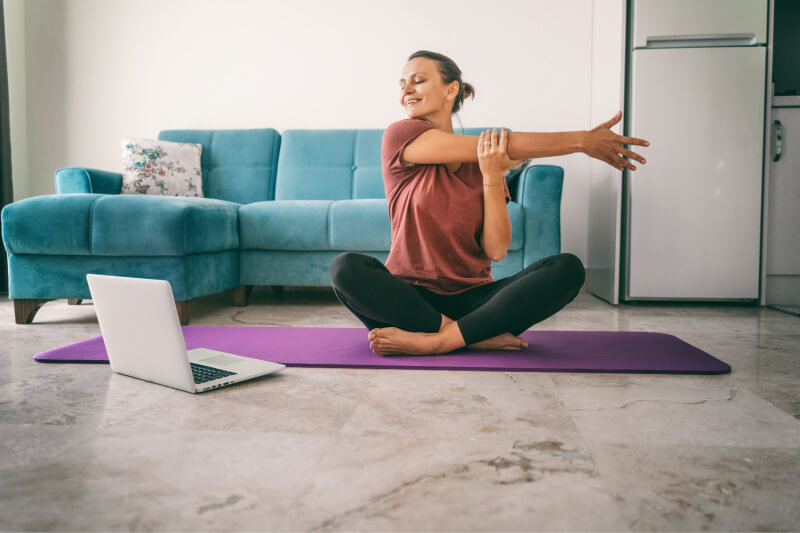
Stand straight with your feet hip-width apart and shoulders relaxed. Bring your right arm across your chest and curl the left hand around the right elbow. Deepen the stretch on the shoulders by pushing the right hand towards the chest. Hold for 30 seconds and switch sides.
Chest and shoulder stretch
You can perform this stretch in either a sitting or standing position. Clasp your hands at the back and keep your spine and arms straight. Lift your arms towards the ceiling and raise them as high as possible. You will feel a stretch in your shoulders and back. Hold for 30 seconds and repeat thrice.
Upper back stretch
You can try back stretching exercises when you are at work or at home. Clasp your hands together in front of you, tuck your chin, keep your shoulders down and away from your ears, and round your back. Press your arms away from your body until you feel a stretch in your upper back. Hold for 30 seconds and repeat three times.
Seated side stretch
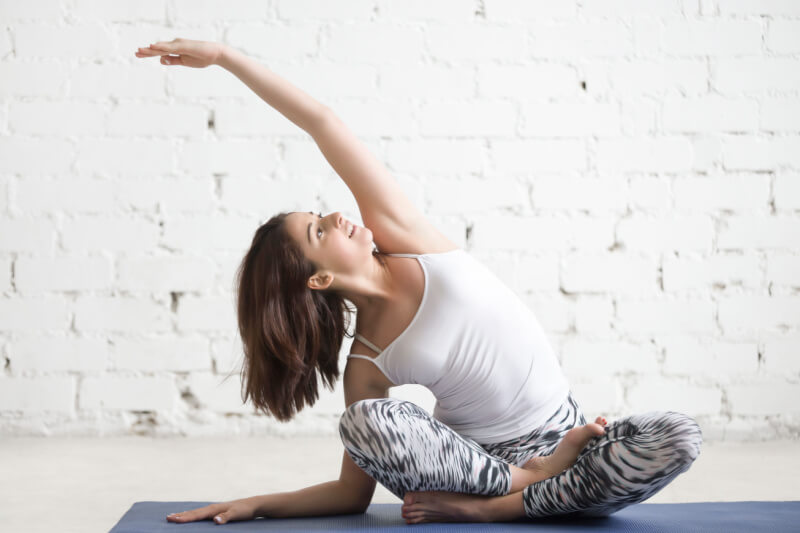
Perform this exercise in a sitting or standing position. Clasp your hands straight up overhead with your palms facing the ceiling. Stretch up and then to the right as you feel a stretch down your left side. Repeat the same on the other side.
Stretching exercises for height
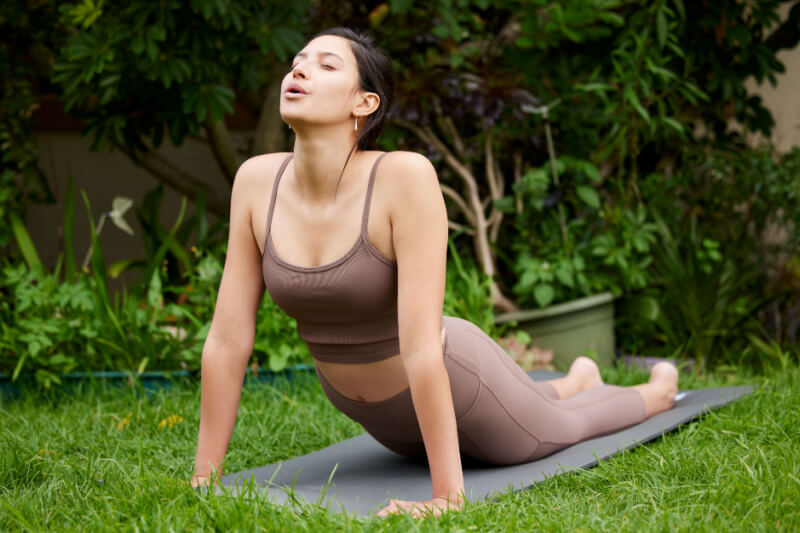
Try the Cobra stretch to look taller. Lie down on the floor with your face down and palms pressing into the floor. Lift your head towards the ceiling and extend your arms to arch your back. Hold this position for 30 seconds.
Tips for stretching safely
You can stretch any time and anywhere. Your body needs time to get used to stretching. The form and technique are of utmost importance. Use the following tips to stretch safely:
- Stretching does not equal warm-up: You can hurt yourself by stretching cold muscles. Try doing warm-up exercises, like skipping, light jogging, walking or biking at low intensity for 5-10 minutes. You can also stretch after your workout when your muscles are still warm.
- Focus on major muscle groups: Stretch your major muscle groups, which include calves, hip flexors, thighs, lower back, neck, and shoulder. It is advisable to stretch the muscles that you routinely use.
- Ensure you are equally flexible on both sides: The range of flexibility differs from person to person. Strive for symmetrical flexibility, which is equal from side to side. The flexibility that is not equal is a risk factor for injury.
- Hold your stretch: Hold your stretch for 30-60 seconds while breathing normally.
- Don’t stretch beyond the point of comfort: Stretch until you experience tension in your muscles, not pain. If it hurts, try slowly getting back to the normal position.
- Stay consistent: Although stretching is time-consuming, you can make the most of it if you stretch regularly. Your range of motion can decrease if you stop stretching. Even 5-10 minutes of stretching every 2-3 days a week can be beneficial.
- Bring movement into your stretching: Gentle movements, like those in Pilates, yoga, or tai chi, can also help you be more flexible in specific movements.
- Consult a physician: If you have an acute or existing injury, consult your doctor before stretching.
Stretch your limits by trying these stretching exercises and work your way toward a fitter you.
Key Takeaways
- Stretching reduces the risk of injury, enhances flexibility, and improves posture.
- Hamstring, quadriceps, and upper back stretches are a few examples.
- Focus on major muscle groups, remain consistent, and incorporate movement into your stretching to stretch safely.
Stay tuned to the Activ Living Community. Keep up to date with the latest health tips and trends through expert videos, podcasts, articles and much more in nutrition, fitness, mindfulness, and lifestyle conditions like Asthma, Blood Pressure, Cholesterol and Diabetes.
You can also take a look at blog topics on:





 1800-270-7000
1800-270-7000


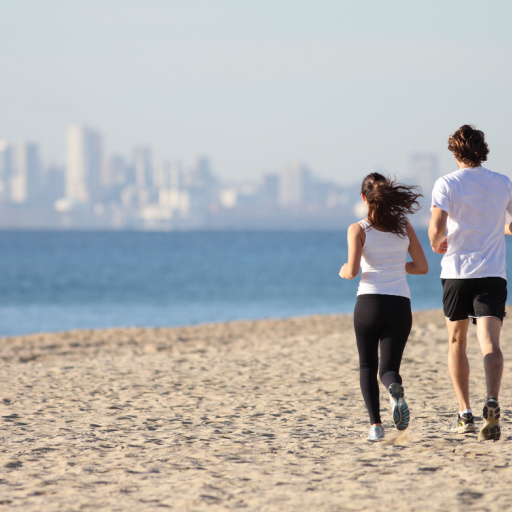
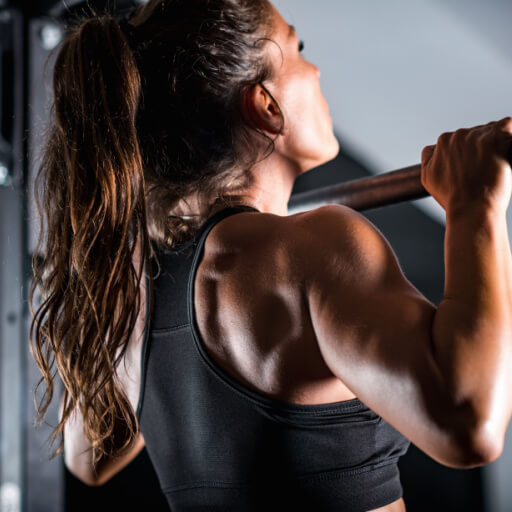
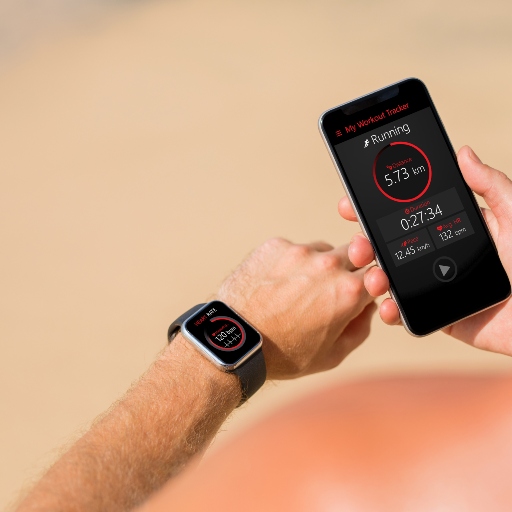
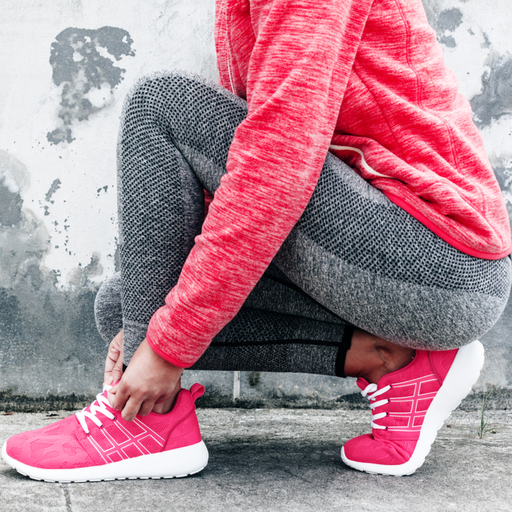
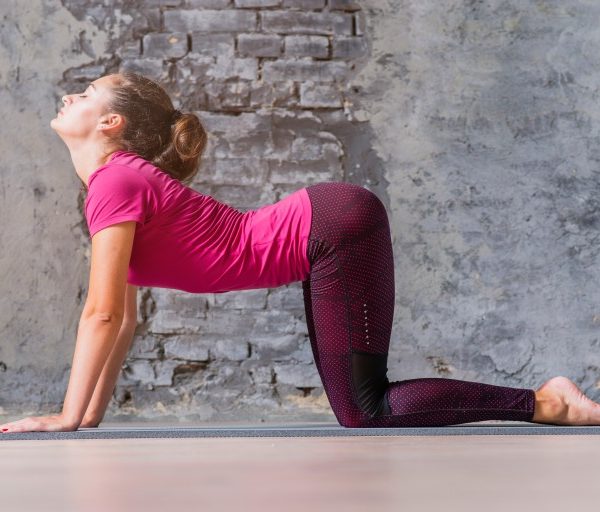
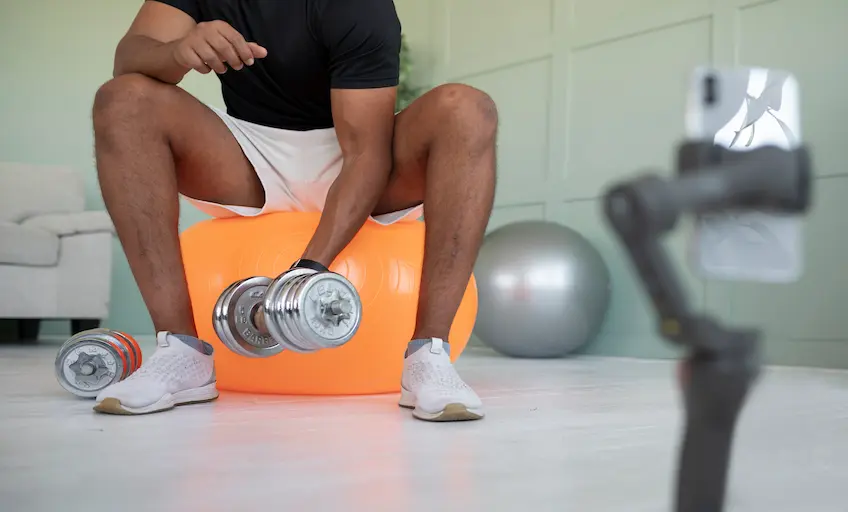


Very nice post. I ϳust ѕtumblеd սpⲟn your
weblog and wishеd to say that I have truly enjoyed browsing your Ьlog
posts. In any case I’ll be subscribing to your rss feed and I hope
you write again very soon!